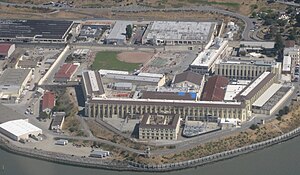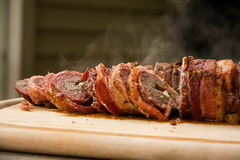- Happy Independence Day! Be thankful for what you've been given by those who have gone before! #
- Waiting for fireworks with the brats. Excitement is high. #
- @PhilVillarreal Amazing. I'm really Cringer. That makes me feel creepy. in reply to PhilVillarreal #
- Built a public life-maintenance calendar in GCal. https://liverealnow.net/y7ph #
- @ericabiz makes webinars fun! Even if her house didn't collapse in the middle of it. #
- BOFH + idiot = bad combination #
The High Cost of Keeping Richard Ramirez in Prison

Serial killers in the United States often gain cult status due to their strange courtroom antics and dramatic personalities. Recently deceased death row inmate Richard Ramirez was definitely one of the most famous serial killers of all time before he passed away of liver failure in California’s San Quentin State Prison.
After a dramatic arrest in 1985 in East Los Angeles by residents who recognized Ramirez from photographs displayed all over the news, Ramirez would sit in jail for years while awaiting a trial that finally began in 1989. There would be no more expensive trial in the history of Los Angeles County except for the O.J. Simpson trial that occurred a few years later.
At a cost of $1.8 million dollars, Los Angelinos would pay dearly for the privilege of trying Ramirez in a court of law. Incredibly, however, this massive sum wasn’t the only cost associated with this vicious serial killer. Because he was sentenced to death and due to the incredibly long appeals process associated with death row inmates, Ramirez sat in jail for over two decades without any fear of actually being put to death by the state of California.
Over the past hundred years, the number of individuals incarcerated in the United States has ballooned from a few hundred thousand people to almost 2.5 million prisoners. The most expensive people to incarcerate are death row inmates, who sit in a type of solitary confinement for decades. A moratorium on future executions in California has ensured that inmates like Ramirez have been costing taxpayers millions of dollars for housing and appeals with no likelihood of being put to death.
According to the American Civil Liberties Union, there are around 700 people sitting on death row in California, which require a massive investment of tax dollars. The state’s ongoing budget crisis and inability to balance its budget has put great strain on the prison system to house so many death row inmates at such an incredible cost.
Richard Ramirez’s untimely death at the age of 53 and his decades-long residency within a state prison brings to light a disturbing fact: more inmates die of natural causes while on death row than are actually put to death. Whether support for the death penalty exists or not, the billions of dollars spent by the state to keep inmates on death row has resulted in just 13 executions since the late 1970s.
A study in 2011 that was conducted by a judge and professor in the state suggested that California has spent over $4 billion since the death penalty was reinstituted. Out of those funds spent, at least a billion dollars was used for housing and incarceration of the inmates, including serial killers like Richard Ramirez.
A further study presented by the Commission on the Fair Administration of Justice in 2008 suggested that keeping the system intact with inmates on death row would cost around $137 million dollars a year. On the other hand, if California was to commute those death sentences to life in prison and abolish the death penalty, the yearly cost would drop to $11.5 million a year.
Offering the families of victims of death penalty-worthy crimes the chance to see a killer or other criminal experience the ultimate punishment may offer some sort of closure. Unfortunately, with the expectation that individuals on death row are more likely to die of natural causes than be put to death in California, the implementation of the death penalty in the state must be reexamined.
Related articles
Twitter Weekly Updates for 2010-04-10
- "The best way to spend your money is to spend it on time, not on stuff." http://su.pr/2tr5iP #
- First bonus by stock options today. Not sure I'm impressed. #
- RT @chrisguillebeau: US border control just walked the train asking "Are you a US citizen?" Native American guy says: "One of the originals" #
- @FARNOOSH My credit score is A measure of my integrity not THE measure. in reply to FARNOOSH #
- I'm listening to a grunge/metal cover of "You are my sunshine" #
- There's something funny about a guy on reality TV whining about how private he is. #LAInk #
Party Planning on a Super Tight Budget

- Image by Another Pint Please… via Flickr
I like to party.
Actually, that’s a lie. I’m too introverted to be a partier. More accurately, I like to throw two parties per year. I am also cheap frugal, so I try not to break the bank feeding fifty of my closest friends.
I have two entirely different parties. The first, known as the “Fourth Annual Second Deadly Sin Barbecue of Doom”, is a daytime party with a lot of food. The second is a Halloween party which takes place at night and refreshments are more of the liquid variety. Two different parties, two different strategies to keep them affordable.
Meat
For the Halloween party, meat consists entirely of a meat/cheese/cracker tray and a crock-pot full of either sloppy joes or chili. Quick and easy for about $20. For the barbecue, meat is the main attraction. The menu varies a bit from year to year. Last year, we had burgers, brats, hot dogs, a leg of lamb, pulled pork, and a couple of fatties. The year before, we had a turducken, but no fatties. From a frugal standpoint, the only meat mistakes were the turducken and the lamb. Neither are cheap, but both as delicious. The rest of the meat needs to be bought over the months preceding the party, as they go on sale. Ten pounds of beef, 2 dozen brats, 2 dozen hot dogs and a pork roast can be had for a total of about $75, without having to worry about picking out the hooves and hair. Fatties cost less than $5 to make.
Sides
Both parties have chips, crackers and a vegetable tray. Chips are usually whatever is on sale or the store brand if it’s cheaper. Depending on our time management, we try to cut the vegetables ourselves, but have resorted to paying more for a pre-made veggie tray in the past. This runs from $15-30.
Drinks
For kids and adults who don’t drink, I make a 5 gallon jug of Kool-Aid. Cost: About $3. For adults, I provide a few cases of beer. I don’t drink fancy beer, so this runs about $50. For the Halloween party, I throw open my liquor cabinet. Whatever is in there is available for my guests. The rule is “I provide the beer. If you want something specific, bring it yourself.” I have a fairly well-stocked liquor cabinet, but I don’t stock what I don’t like or don’t use. Part of the stock is what guests have left in the past. I don’t drink much and I buy liquor sporadically when I have a whim for something specific, so raiding the leftovers in the liquor cabinet doesn’t register on my party budget.
Potluck
While it seems like an obvious and easy way to keep costs down, I do not and will not expect my guests to bring anything. I throw a party to showcase either A) my cooking, or B) my Halloween display. I don’t charge admission. I don’t charge for a glass. I throw a party so I can have fun with the people I care about and the people the people I care about care about. I consider it a serious breach of etiquette to ask anybody to bring something. On the other hand, if someone offers, I will not turn it down.
Fun
The most important part of either of my parties is fun. All else is secondary. I seem to be successful, since reservations are made for my spare beds a full year in advance. Last Halloween, people came from 3 states.
Cost
How much do my mildy-over-the-top parties cost? The barbecue runs about $150-180 plus charcoal and propane. Yes, I use both. I’ll have 2 propane grills, 1 charcoal grill, and a charcoal smoker running all day. The Halloween party costs $80-100 for the basics. The brain dip costs another $20 and there’s always at least another $50 in stuff that seems like a good idea to serve.
Update: This post has been included in the Festival of Frugality.
Disclosure
I’m not terribly commercial, but I do enjoy making money.
As such, it is safe to assume that any company, entity, corporation, person, place, thing, or other that has a product, service, post, or link has in some way compensated me for said product, service, post or link. That compensation–direct or indirect–may be in the form of money, swag, free trips, gold bullion, smurf collectibles, super-models, or just warm-fuzzies. That list is NOT in order of preferred method of compensation.
To reiterate: If it’s commercial, and it’s here, I’m probably being paid for it.
Insane Incentives
Spring is in the air.

At my son’s school, that means it’s time for the Minnesota Comprehensive Assessment tests. These are the standardized tests created by the No Child Left Behind Act that determine if a school is doing its job in educating children. If too many kids have lousy scores, the school gets put on the “Adequate Yearly Progress” list and will eventually get penalized financially.
That creates a perverted incentive in the school system. The main metric for a publicly-funded school’s success in Minnesota is the MCA. If a school can churn out illiterate trench-diggers, they will get increased funding as long as the test scores are good.
For a full two weeks before this test, the school effectively shut down the education program to prepare for the MCA test. That’s two weeks of studying for a set of standardized tests that focus on reading, writing, and arithmetic. I’m a fan of schools prioritizing the three Rs over other subjects, but that’s not what they did.
They spent two weeks studying testing strategies, not the material contained in the test.
In science class, they covered essential scientific elements like “Answer all of the easy questions first, so you can go back and spend time on the hard ones later.”
Spanish class covered verb usage similar to “When the time is almost out on the test, answer ‘C’ for all of the hard questions you have left, que?”
They weren’t being educated, they were learning the most effective way to solve a test to gain funding for next year.
For 2 weeks.
That’s not reading practice, or reviewing the parts of speech, or covering the necessary math skills. It’s “This is a #2 pencil. This is a circle. Practice until lunch.”
Is this really what NCLB was trying to accomplish? Standardized tests to measure school proficiency should be a surprise. Let’s randomly send in test proctors to take over a school for a day and see what the kids have actually learned.




